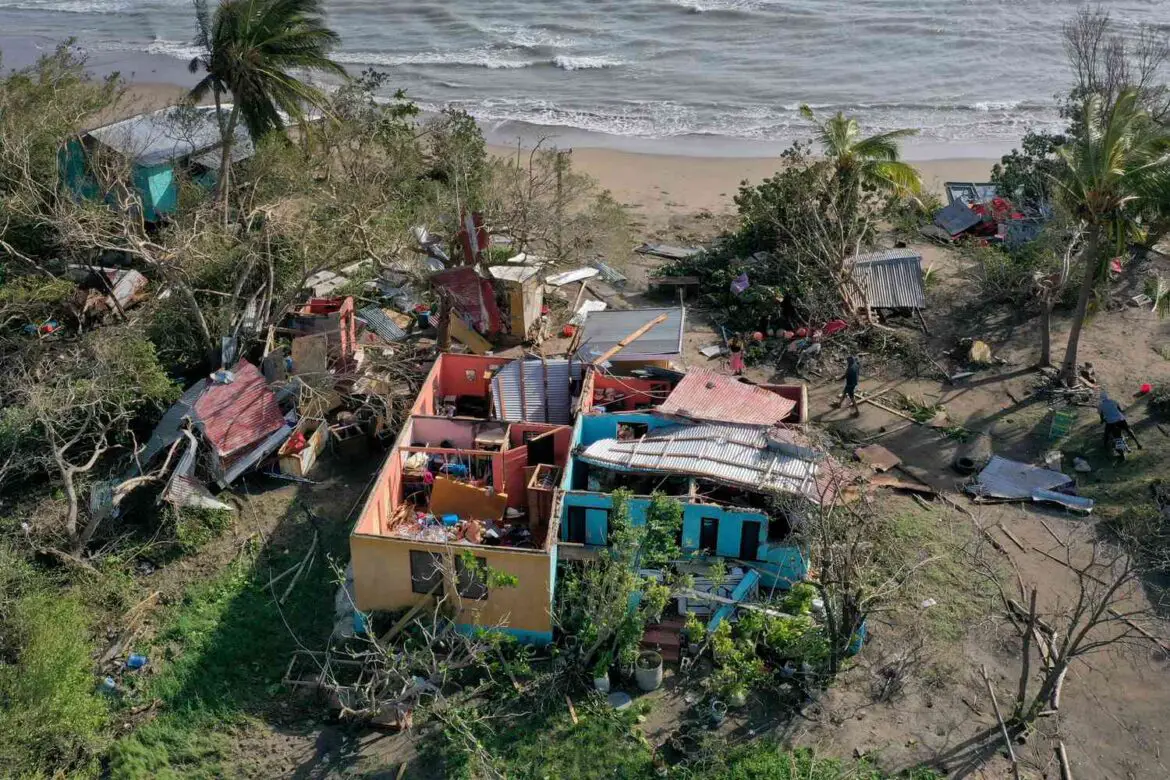- According to the National Weather Service, Hurricane Beryl made landfall in Texas as a Category 1 storm in the early hours of Monday, July 8
- “Life-threatening storm surge and strong winds are occurring with considerable flash and urban flooding expected,” the National Weather Service added
- Hurricane Beryl is believed to have already killed 10 people on its path through the Caribbean and Central America
Hurricane Beryl has officially made landfall in Texas.
The hurricane hit the eastern part of the state in the early hours of Monday, July 8, according to the National Hurricane Center.
In a post shared on X (formerly Twitter), the NHC said the hurricane had made landfall near Matagorda — a community between Corpus Christi and Galveston — at around 4:00 a.m. CDT with “maximum sustained winds of 80mph.”
“Life-threatening storm surge and strong winds are occurring with considerable flash and urban flooding expected,” the post continued.
According to the National Weather Service, Beryl made landfall in Texas as a Category 1 storm. A hurricane warning is currently in place across Matagorda Bay, from Mesquite Bay to Port Bolivar.
“This is a life-threatening situation. Persons located within these areas should take all necessary actions to protect life and property from rising water and the potential for other dangerous conditions,” the NHC said, per NBC News.
Winds of 92 mph were reported in Freeport, a city east of Matagorda, while some areas of southeast Texas were receiving two to four inches of rain per hour, according to USA Today.
Photos shared on X by the Rosenburg Police showed flooded streets and officers being dispatched to a water rescue in the area, which is north of Matagorda.
The hurricane has also left at least 487,000 people without power in Texas, according to an update from poweroutages.us shared at 7:05 a.m. ET.
The storm is forecasted to weaken into a tropical storm as it moves north through eastern Texas over the next 12 hours, per NBC News.
The death toll of the hurricane, which at one point strengthened to a Category 5 hurricane, rose to at least 10 on Thursday, July 4, after Beryl hit Jamaica and the Cayman Islands, according to Reuters.
Victoria Razo/Bloomberg via Getty
On July 5, the NHC issued hurricane and storm surge watches along the Texas/Mexico border and along the Texas coast from the Rio Grande through Corpus Christi.
“There is an increasing risk of damaging hurricane-force winds and life-threatening storm surge in portions of northeastern Mexico and the lower and middle Texas Coast late Sunday and Monday where watches have been issued,” the NHC said.
The NHC went on to say that that the Texas Gulf Coast can expect “Heavy rainfall of 5 to 10 inches with localized amounts of 15 inches” on “late Sunday (July 7) through the middle of next week.”
The rain is expected to produce flash foods, especially in urban areas.
Beryl hit the Caribbean as a Category 5 hurricane and went though Jamaica and the Cayman Islands as a major storm on July 3. As of July 4, the hurricane had killed at least seven people, per the Associated Press.
Three deaths were reported in Grenada and Carriacou while another occurred in St. Vincent and the Grenadines, the news agency said, citing officials. Additionally, three deaths were reported in Venezuela.
Victoria Razo/Bloomberg via Getty
Per the New York Times, officials in Grenada reported that 98% of the buildings on Carriacou and Petite Martinique have been destroyed by the storm, including the airport and the Princess Royal Hospital – Carriacou’s main health center.
Never miss a story — sign up for PEOPLE’s free daily newsletter to stay up-to-date on the best of what PEOPLE has to offer, from juicy celebrity news to compelling human interest stories.
As of July 2, Grenada’s residents — ranging between 9,000 and 10,000 people — were left without electricity and communication.
Beryl is the first hurricane of the 2024 season and is the earliest storm to begin as a Category 5 hurricane in the Atlantic Ocean, per Reuters.




